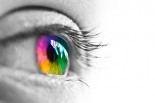The brain has its own "eye." You may think you see with your eyes, but you actually see with your brain.
What you believe largely determines what you see and don't see, mainly because you've already predetermined where you'll look and where you won't look for answers.
If you keep looking in the same places you've always looked, you're not going to get anywhere.
True, belief is intangible. But, scientifically, when you choose to believe (rather than fear), positive changes happens chemically within the brain.
Dan Castro is an award-winning author, an attorney, and serial entrepreneur. He joins Naturally Savvy host, Lisa Davis, to discuss how your beliefs help determine what you see and don't see, as well as share very specific, scientific reasons as to how this phenomenon works.
- Belief stimulates the prefontal cortex (our problem solving center) with blood, nutrients, and oxygen. Fear robs the prefrontal cortex of blood, nutrients and oxygen and shifts them to the pons and the medula (at the base of the skull).
- Belief stimulates creativity and problem solving skills.
- Belief floods your system with dopamine, serotonin, and endorphins, all of which give you confidence and courage to act.
- Belief gives you the ability to embrace the absurd and the impossible. It allowed Columbus to sail West in order to find a way to the East.
- Belief allows you to see things with the brain that you can't see with your eyes.
- Belief gives you the incentive to keep looking for solutions long after everyone else has given up.
- Belief stimulates cell growth and the creation of new neural connections. Fear generates cortisol, which shrinks your cells and weakens your immune system.
- Belief affects your chemicals, your hormones, your breathing, your heart rate, and the way your brain functions.
- Belief affects the way your taste buds work (five bottles of wine at different prices; the most expensive and the least expensive were exactly the same wine).

 Bloomberg BusinessWeek calls Dan Castro a “serial entrepreneur.” In fact, Dan Castro is an award-winning author, an attorney, and serial entrepreneur who has built a law firm, a real estate brokerage, a property management company, a loan servicing company, and an educational company that teaches real estate investing.
Bloomberg BusinessWeek calls Dan Castro a “serial entrepreneur.” In fact, Dan Castro is an award-winning author, an attorney, and serial entrepreneur who has built a law firm, a real estate brokerage, a property management company, a loan servicing company, and an educational company that teaches real estate investing.